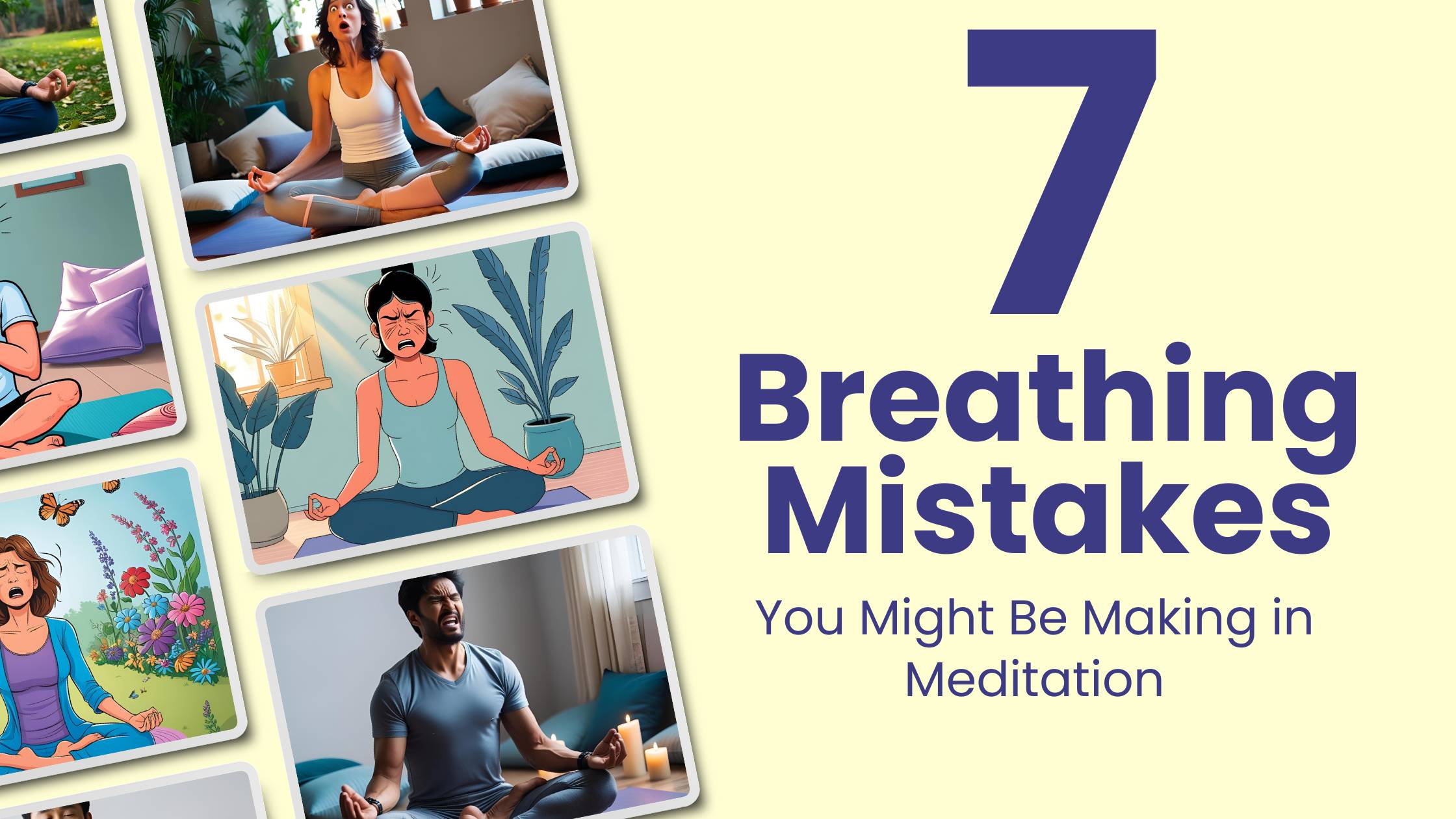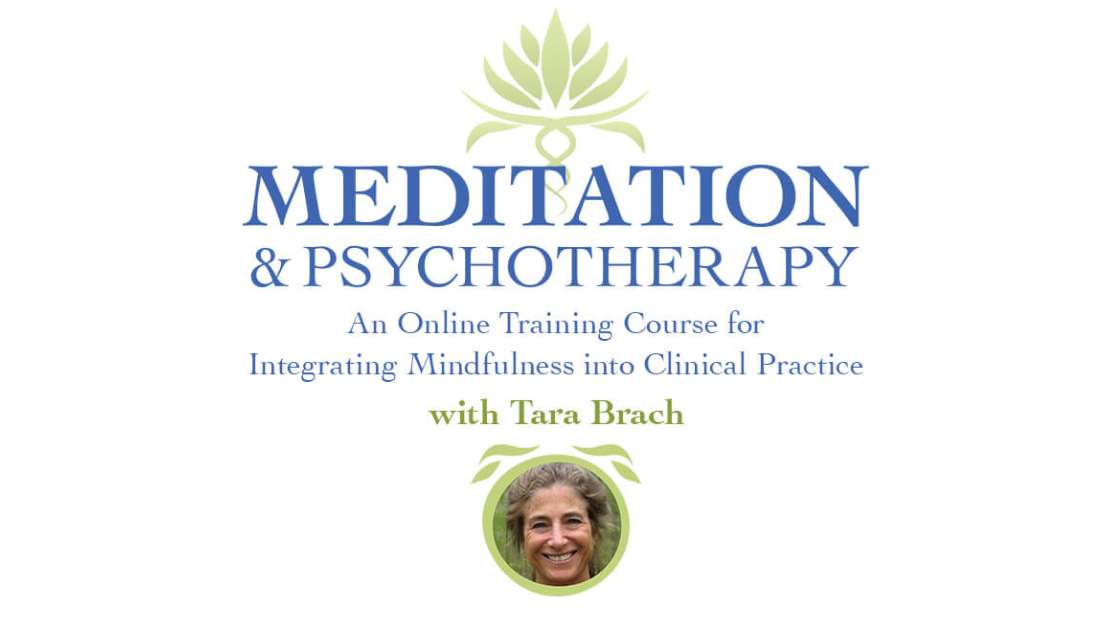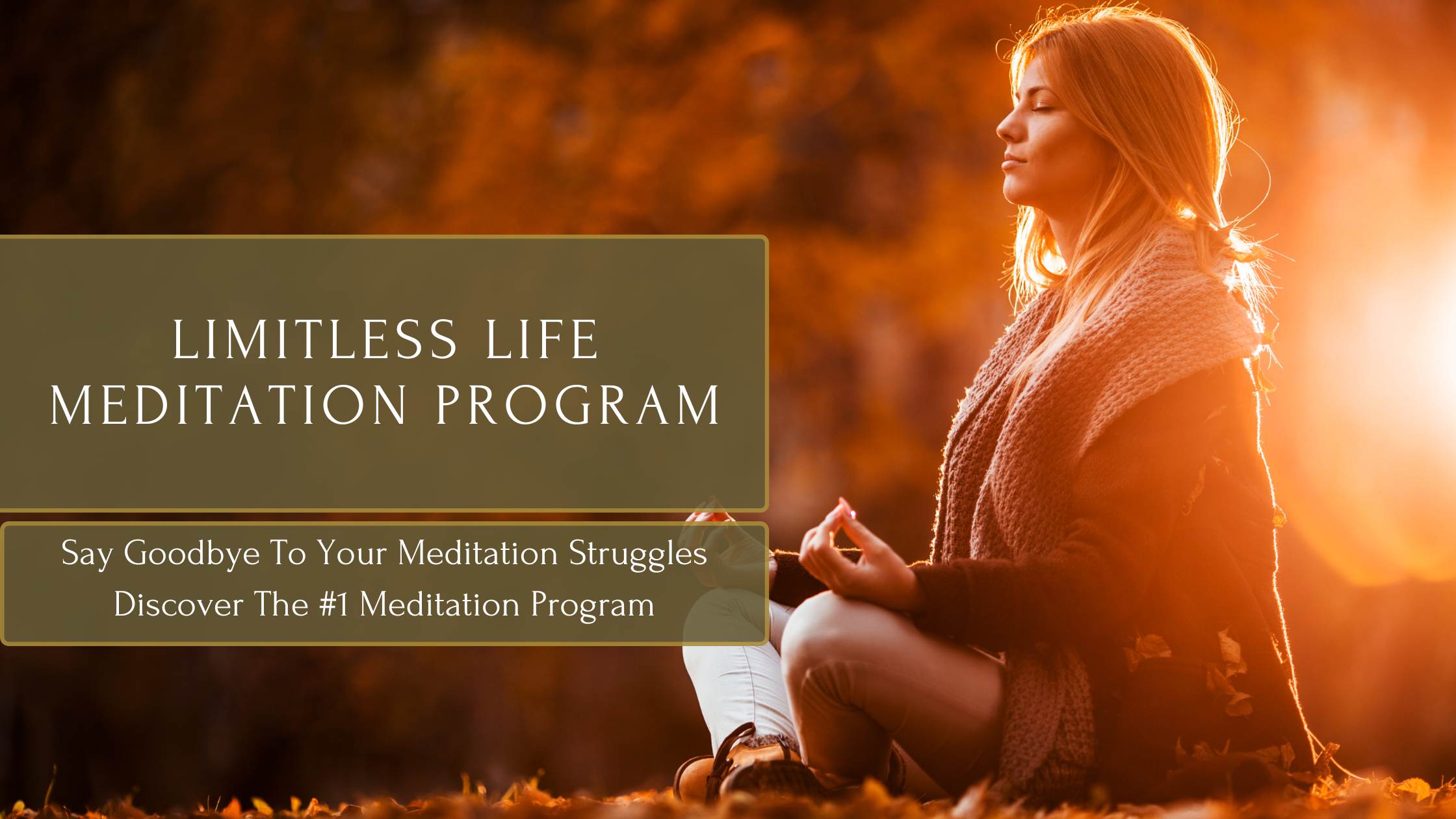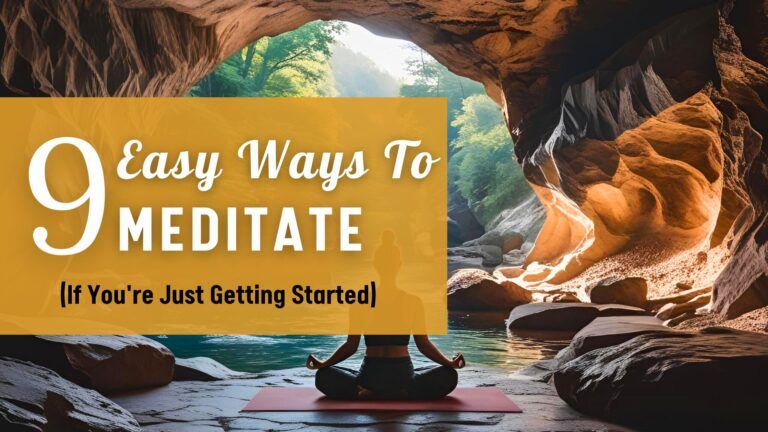Is it hard for you to sit still and calm your mind, even when you want to meditate? You’re not alone. Many beginners feel unsure about where to start or think meditation is too difficult to fit into daily life. The good news? There are plenty of easy ways to meditate that don’t require special skills, long hours, or even complete silence.
In this blog post, you’ll discover 9 beginner-friendly techniques, from grounding exercises and breathing methods to quick resets and compassion practices. Whether you have two minutes or ten, you’ll find something here that works for your schedule and helps you feel more present, calm, and centered.
TL;DR – Easy Ways to Meditate
New to meditation? Here are 9 easy ways to get started, no long sessions or experience required:
- RAIN Technique – Work through emotions with Recognize, Allow, Investigate, Nurture.
- 5-4-3-2-1 Grounding – Use your senses to calm your mind and body.
- Noting – Gently label thoughts or feelings as they arise.
- Self-Compassion Break – Treat yourself with the kindness you’d offer a friend.
- 4-7-8 Breathing – Relax your nervous system with a simple breathing pattern.
- Flash Meditation – Use a 2-minute reset to center yourself during a busy day.
- Zen Counting Meditation – Focus and calm the mind by counting each breath.
- Reverse Breath (Bhastrika) – A more energizing breathwork practice.
- Box Breathing – A 4-step breath pattern to restore calm and balance.
1. Start with the RAIN Technique (For Difficult Emotions)
When you’re feeling stressed, anxious, or overwhelmed, the RAIN technique is a simple way to pause and respond with more care instead of reacting automatically.
RAIN is an easy-to-remember four-step process: Recognize, Allow, Investigate, Nurture. Here’s how it works:
R – Recognize what’s happening
Begin by gently noticing what you’re feeling or thinking. Is it anxiety? Sadness? Frustration? You don’t have to fix it, just name it.
Example: “I’m feeling nervous.”
This first step creates a moment of awareness instead of letting the emotion run the show.
A – Allow the experience to be there
Instead of pushing the feeling away or telling yourself to “get over it,” see if you can allow it to be there for now.
You might say to yourself, “It’s okay to feel this way.”
This helps reduce inner resistance and brings more acceptance into the moment.
I – Investigate with curiosity
Ask yourself gentle questions to understand what’s really going on.
“Where do I feel this in my body?”
“What might I need right now?”
This step helps you explore your experience instead of judging or ignoring it.
N – Nurture with self-compassion
End the practice by offering yourself some kindness. This could be a kind phrase, a hand on your heart, or just taking a slow breath.
Say something like, “I’m here for myself” or “May I be kind to myself.”
It helps you shift from criticism to care, especially during tough moments.
Why RAIN is helpful
- It gives you space between feeling and reacting.
- It teaches emotional awareness in a kind and supportive way.
- It can be used anytime, especially during emotional stress or decision-making.
Even if you don’t follow every step perfectly, just pausing to recognize and allow what you’re feeling is a powerful start.
2. Ground Yourself with the 5-4-3-2-1 Technique
Feeling scattered or anxious? This quick grounding exercise helps bring your focus back to the present moment using your five senses.
The 5-4-3-2-1 technique is easy to remember and can be done anytime, anywhere. It gently guides your attention away from racing thoughts and toward what’s real and happening right now.
Here’s how to do it:
- 5 things you can see
Look around and name five things you can see. It could be the wall, your phone, a shadow, your hands, anything in your surroundings. - 4 things you can feel
Notice four things you can physically feel. This might include the texture of your clothes, the chair under you, or your feet touching the ground. - 3 things you can hear
Listen carefully and identify three different sounds. Maybe you hear the hum of a fan, a bird outside, or the ticking of a clock. - 2 things you can smell
Try to notice two scents. If you don’t smell anything right now, you can move to where you can (like a cup of tea, soap, or even your shirt). - 1 thing you can taste
Focus on one thing you can taste. It might be the aftertaste of coffee, gum, or simply the taste of your mouth.
Why this works:
- It interrupts worry or panic by shifting your attention to your senses.
- It slows you down and connects you to the present.
- It’s short, practical, and doesn’t require sitting still or closing your eyes.
When to use it:
This technique is especially helpful during moments of stress, overwhelm, or when your mind won’t stop racing. It’s also a great tool for staying present before important conversations or events.
3. Try the “Noting” Technique
Do you often get lost in thought while trying to meditate? The “noting” technique helps you gently return your focus without getting frustrated.
Noting is a simple mindfulness method where you mentally label what’s happening in your mind or body. Instead of trying to stop your thoughts, you just notice them and give them a name like “thinking,” “worrying,” or “hearing.”
How to practice the Noting technique:
- Find a quiet spot and sit comfortably.
Close your eyes if that feels okay, or keep them softly open. - Focus on your breath or body.
Try to stay with the feeling of breathing in and out or the sensations in your body. - When your mind wanders (and it will), gently “note” what you noticed.
For example:- If a thought comes up, you might note: “thinking.”
- If you hear a sound, you might note: “hearing.”
- If you feel tension, you might note: “tightness” or “feeling.”
- Then gently bring your attention back to your breath or body.
There’s no need to analyze or judge what came up, just label it and return.
Why it’s helpful:
- It builds awareness of where your attention goes.
- It helps you create space between you and your thoughts.
- It makes meditation feel less frustrating—because distractions become part of the practice.
This technique is great for developing mindfulness in a gentle, non-judgmental way. Over time, it helps you become more aware in daily life, not just during meditation.
Are you unknowingly making these meditation mistakes?
Learn why “trying too hard” to relax doesn’t work and how small breathing errors can disrupt your calm.


4. Take a Self-Compassion Break
We’re often quick to show kindness to others, but when it comes to ourselves, we can be harsh and critical. A self-compassion break is a short and powerful practice that helps you treat yourself like a friend, especially during tough moments.
This technique, created by psychologist Kristin Neff, takes less than a minute and helps you respond to stress or failure with kindness instead of judgment.
Here’s how to do a Self-Compassion Break:
- Notice that you’re struggling.
Start by saying to yourself, “This is a moment of suffering.”
It could be emotional pain, stress, self-doubt, or disappointment. Just name it. - Remind yourself that you’re not alone.
Say something like, “Suffering is a part of being human.”
This helps you remember that everyone goes through hard times. You’re not weak or broken, just human. - Offer yourself kindness.
Gently place your hand on your heart or another soothing spot.
Say to yourself something supportive, such as:- “May I be kind to myself.”
- “I’m doing the best I can.”
- “It’s okay to feel this way.”
Why this is helpful:
- It helps you shift from self-criticism to self-care.
- It creates a pause between emotion and reaction.
- It supports emotional healing and builds resilience over time.
When to use it:
This is especially useful when you’re feeling overwhelmed, frustrated with yourself, or caught in negative self-talk. You can use it silently in your mind, no one needs to know.
Even if it feels awkward at first, practicing self-compassion regularly can change how you relate to yourself, one kind moment at a time.
5. Breathe with the 4-7-8 Technique
If you’re feeling anxious, restless, or having trouble falling asleep, the 4-7-8 breathing technique can help calm your body and mind in just a few minutes.
This simple breathing pattern slows your heart rate and activates the relaxation response. It’s often called a “natural tranquilizer for the nervous system.”
How to practice 4-7-8 breathing:
- Sit or lie down comfortably.
Keep your back straight if sitting. Relax your shoulders. - Inhale through your nose for 4 seconds.
Let the air fill your belly, not just your chest. - Hold your breath for 7 seconds.
Don’t strain, just gently hold it in. - Exhale slowly through your mouth for 8 seconds.
You can slightly purse your lips, as if blowing out a candle. - Repeat for 3 to 4 rounds.
It’s normal to feel light-headed at first, especially if you’re not used to slow breathing.
Why this technique works:
- It helps slow down your breathing and heart rate.
- Holding the breath gives your body a moment to reset.
- The long exhale triggers a calming effect on your nervous system.
When to use it:
- Before bed to fall asleep faster.
- When you feel anxious, overwhelmed, or restless.
- Anytime you need a quick mental reset.
You can do this practice anywhere, at your desk, in bed, or even during a stressful moment in your day. It only takes a minute or two, but the calming effect can last much longer.
6. Reset with a Flash Meditation (2-Minute Quick Reset)
Think you don’t have time to meditate? Flash meditations are short, simple practices that help you pause and reset, even on your busiest days.
In just two minutes, you can shift your focus, calm your thoughts, and reconnect with the present moment.
How to do a 2-minute flash meditation:
- Find a quiet or comfortable spot (if possible).
Sit or stand still. You can close your eyes or keep them softly open. - Bring your attention to your breath.
Feel the air moving in and out of your nose. Don’t try to change your breath, just notice it. - When thoughts come up, gently return to the breath.
You might only get a few calm breaths before a thought appears. That’s okay. Just notice and return. - Use a timer if you like.
Set a 2-minute timer so you’re not distracted by checking the clock.
Optional variations:
- Focus on a sound or body sensation instead of the breath.
- Place your hand on your chest or belly to feel your breath.
- Use a short phrase like “I’m here” or “This moment” to stay grounded.
Why flash meditations are helpful:
- They fit easily into your day, even during short breaks.
- They help you build a consistent habit without pressure.
- They teach you that a little stillness goes a long way.
When to use them:
- Between meetings or tasks.
- Before making a decision or reacting to something stressful.
- Anytime you feel disconnected or on autopilot.
Flash meditations remind us that mindfulness doesn’t require a long retreat. Just a few mindful breaths can shift your whole day.
Struggling with meditation? That might be the best thing for you.
Most people quit too soon, but the truth is, struggle can be powerful. Find out why, and discover surprising ways meditation helps you grow into your best self.


7. Practice Zen Counting Meditation
If your mind often wanders during meditation, counting your breaths can help you stay focused. Zen counting meditation is a gentle way to train your attention and quiet your thoughts.
This method is as simple as it sounds, just count your breaths. But the simplicity is what makes it powerful.
How to practice Zen counting meditation:
- Sit comfortably and close your eyes.
You can rest your hands on your lap and relax your shoulders. - Breathe naturally and focus on your exhale.
After each breath out, count silently in your mind. - Count from 1 to 10, one number per breath.
- Inhale… exhale… “one”
- Inhale… exhale… “two”
- Continue up to ten, then start again at one.
- If your mind wanders and you lose count, gently start over.
No need to feel frustrated—it’s part of the practice.
Optional variation:
You can count each full breath cycle (inhale + exhale = one) instead of just the exhale. Try both and see which feels more natural.
Why this technique works:
- It gives your mind something simple to focus on.
- Counting helps prevent your attention from drifting too far.
- It builds mental discipline in a soft, non-pushy way.
When to use it:
- During morning meditation to begin the day with clarity.
- In quiet moments when you want to settle your thoughts.
- As a basic daily practice for beginners.
8. Use the Reverse Breath Method (Bellows Breath or Bhastrika)
Need a quick energy boost or mental reset? The Reverse Breath Method, also known as Bellows Breath or Bhastrika is a fast and powerful breathing technique that can wake up both your body and mind.
Unlike calming breaths, this method is energizing. It’s like a natural cup of coffee, without the caffeine.
How to practice Bellows Breath (Bhastrika):
- Sit upright with your spine straight.
Keep your hands relaxed on your knees or in your lap. - Inhale deeply through your nose.
Let your belly expand as you fill your lungs. - Exhale forcefully through your nose.
Pull your belly in as you push the air out with strength. - Repeat the breath quickly and evenly.
Aim for 1 breath per second—both inhale and exhale are strong and equal. - Do this for about 10–15 breaths.
Pause and breathe normally. You can repeat the cycle up to 3 times, resting between each round.
Important notes for beginners:
- Start slowly and increase only if you feel comfortable.
- Avoid if you feel dizzy, have high blood pressure, or are pregnant.
- Always listen to your body, if it feels too intense, stop and return to normal breathing.
Why this technique is helpful:
- It boosts oxygen and improves alertness.
- Clears mental fog and increases focus.
- Stimulates the nervous system and lifts low energy.
When to use it:
- In the morning to wake up.
- Before a task that needs energy and focus.
- When you’re feeling tired, dull, or mentally sluggish.
9. Box Breathing (Square Breathing)
Feeling tense or under pressure? Box breathing is a simple breathing technique that helps calm your mind and bring your body back to balance, just like drawing the sides of a square with your breath.
Used by athletes, first responders, and even the military, this method is great for staying calm and focused in stressful moments.
How to practice Box Breathing:
- Sit comfortably and relax your body.
You can close your eyes or keep a soft gaze. - Inhale slowly through your nose for 4 seconds.
Feel your lungs gently expand. - Hold your breath for 4 seconds.
Stay still, try to remain relaxed, not tense. - Exhale slowly through your mouth for 4 seconds.
Let your breath flow out gently and smoothly. - Hold your breath again for 4 seconds.
This completes one full “box.” - Repeat the cycle for 3 to 5 minutes.
You can imagine drawing a square in your mind, each side matching one part of the breath.
Why this technique works:
- It balances your breathing and heart rate.
- Helps activate the body’s relaxation response.
- Creates a steady rhythm that quiets the mind.
When to use it:
- Before a big meeting, interview, or performance.
- During moments of stress, anxiety, or overwhelm.
- As a daily grounding practice to build emotional balance.
Final Thoughts – You Just Need a Starting Point
You don’t need hours of silence or a perfectly still mind to start meditating. As you’ve seen, there are many easy ways to meditate, each one offering a small doorway into mindfulness, calm, and greater self-awareness.
Whether you try a 2-minute flash meditation, count your breaths, or practice a gentle breathing technique like 4-7-8, the most important thing is simply to begin. You don’t need to do all nine techniques at once. Start with the one that feels easiest or most interesting to you.
Every time you pause, breathe, and come back to the present, even for a moment, you’re training your mind to be more steady and kind. Over time, these small practices can lead to big changes in how you feel and respond to life.
So… which one will you try today?
Hope you found this post useful! Want to take your meditation practice further? I have got some fantastic programs that could be just what you need.




